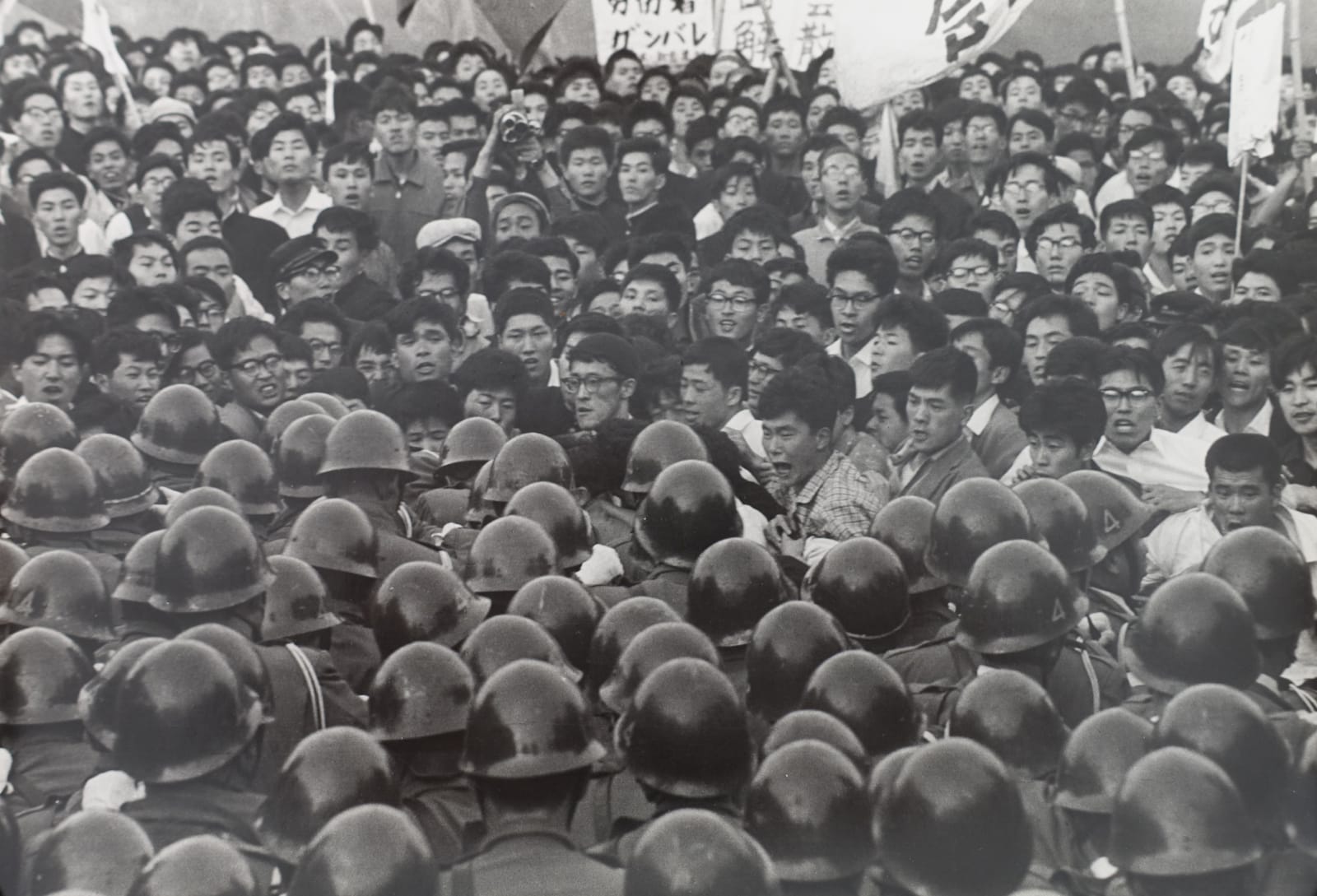-
Artworks

Hiroshi Hamaya
The demonstration of students from 'Chronicles of Grief and Anger.', 1964Vintage silver gelatin print19.4 x 30 cmArtist copyright wetstamp in black ink on verso. Titled in pencil on verso.Literature
About this print:
This image, taken by the Japanese photographer Hiroshi Hamaya, is part of his seminal series Record of Anger and Grief, (1960). Originally published as a photobook, Hamaya’s photography documented the beginning of a decade of turbulent political protests in Japan, and is one of the foremost examples of a new genre — known as “protest books” — which opened up radical modes of photographic expression in the 1960s.
This particular vintage print is one of a series of brilliant pictures that appear as a double page spread in the book. There are a plethora of powerful images in the series that create visceral impressions of the upheaval that besieged Japan during the decade. The superb editing and juxtapositions of each image created a benchmark for future protest books that were to follow in Hamaya's legacy. It quite rightly became one of the most influential publications of the period.
Biography:
Born and raised in Tokyo, Hiroshi Hamaya (1915 - 1999) is considered to have been one of the most eminent Japanese documentary photographers of the 20th century. Working as an aeronautical photographer and a freelance contributor to magazines during the 1930s, Hamaya began his career documenting his hometown from the sky and the streets. An assignment in 1939 saw Hamaya travel to the rural coast of the Sea of Japan, where he became interested in documenting the traditional customs of its people and the austere environment of the region. Over the next two decades he recorded life in remote coastal prefectures, developing a more humanist, ethnographic approach toward photography. In the early 1950s Hamaya settled in the seaside town of Ōiso, where he began to review his body of work and put together his first photobooks.
Later in his career, Hamaya would return to the sprawling urban labyrinth of his youth, to chronicle Tokyo's massive demonstrations against the renewal of the US-Japan Security Treaty (ANPO) in 1960. The resultant photobook, Record of Anger and Grief (1960), would become one of the most famous examples of Japan's post-war visual culture of protest. Aside from his political reportage photography, Hamaya completed a series of landscapes, travelling within Japan and abroad: "I came to realize that natural features in Japan, like the nature of its people, were extremely diversified and complex. I intended to investigate this conclusion with my own eyes."
Hamaya was the first Japanese photographer to join Magnum, and his work was amongst the only Japanese contributions to Edward Steichen’s groundbreaking photography exhibition, ‘The Family of Man’ (1955). More recently, his accolades include the Master of Photography Award from the International Centre of Photography, New York (1986) and the Hasselblad Award. (1987). His works are included in renowned private and public collections worldwide, and he was recently honoured with a two-man show at the J. Paul Getty Museum, Los Angeles (2012).
